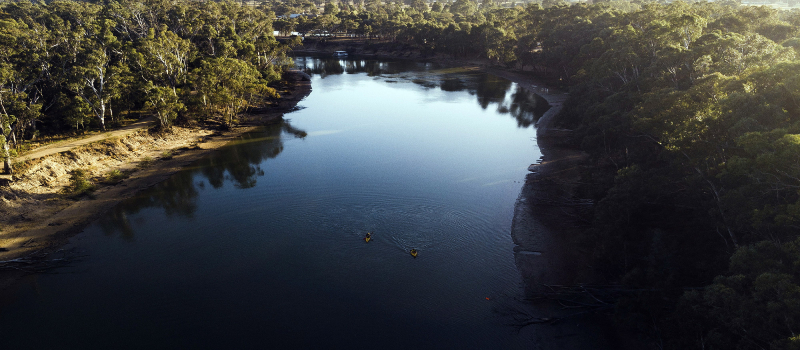About the program
The NSW Government in partnership with local water utilities and the wider water sector are collaborating on the Town Water Risk Reduction Program to develop and implement a new approach of working together that enables local water utilities to manage risks and priorities in town water systems more strategically and effectively and, as a result, reduce risks in regional NSW communities over time.
The program’s focus is on working together with the sector to identify the most fundamental barriers within state and local government that prevent effective and strategic risk management, and to develop and implement long-term solutions to these barriers.
Based on a new partnership approach, the program recognises and leverages the wealth of expertise within Councils and Local Water Utilities and provides opportunities for these stakeholders to design and refine better solutions in collaboration with the department.
The program supports a broader set of changes that the department is leading, aimed at enhancing the capacity of the NSW water sector to manage this critical resource in a strategic and coordinated manner. Other major changes include the development of 12 Regional water strategies that will bring together a wide range of tools and solutions to plan and manage the water needs in each NSW region over the next 20-40 years.
Update
The Town Water Risk Reduction Program will be boosted by an additional $15 million and extended to mid-2028.
Now in its third phase the program will builds on $38 million already invested by the initiative since 2020, including $2 million in funding through Advanced Operational Support to enable 20 Local Water Utilities to carry out critical infrastructure upgrades.
The program will also address critical skills shortages and boost water operations by providing training and employment opportunities in regional NSW for school leavers, Aboriginal students and existing water operators and develop critical reforms in response to the Productivity and Equality Commission’s Review of Funding Models for Local Water Utilities.
Our vision for town water
The department’s overarching goal for this program is to work collaboratively with stakeholders to build a town water sector where:
- stakeholders, including the department, work together in partnership, sharing data and knowledge, consulting and collaborating with one another, and supporting each other where applicable
- local water utilities are supported to manage safe, secure and sustainable water supply and sewerage services in an efficient and customer-focused manner
- the regulation of local water utilities is focused on outcomes, based on risk and the maturity of local water utilities, and is fair and transparent. Regulators are accountable and well-coordinated.
Town Water Risk Reduction Program – Phase 1 Evaluation
The department sought an external evaluation of the program’s progress against its delivery and achievements of outcomes. The evaluation report also includes the identification of insights and key findings from the first 18 months of implementation to inform recommendations for a future work program.
The evaluation of the two-year Phase 1 Town Water Risk Reduction Program (PDF, 1440.73 KB) report found the program to be valuable, has made encouraging progress in achieving its foundational outcomes and stakeholder feedback strongly supports its continuation. Given the ambitious nature of the program, sustained effort and resourcing will be required to achieve its longer-term outcomes.
Phase 1 of the program included activities to:
- improve the regulatory and support framework or local water utilities
- improve access to skills and training
- encourage greater collaboration
- facilitate greater state government support
- investigate alternative funding models
Town Water Risk Reduction Program – Phase 2
Phase 2 of the Town Water Risk Reduction Program was announced by the Minister for Lands and Water in December 2022 and was extended to June 2025 bringing additional benefits at no extra cost.
Phase 2 of the Program included activities to:
- address critical skills shortages and boost water operations training and employment opportunities in regional NSW for school leavers, Aboriginal and First Nations students and existing water operators, in partnership with Training Services NSW
- deliver a new program in partnership with NSW Health to help optimise the performance of high-risk water treatment infrastructure using innovative technology so that more regional towns have reliable, resilient and safe water services
- enable local water utilities to accelerate responses to audits to improve local dam safety and address water quality risks, leveraging the systems and expertise of WaterNSW
Town Water Risk Reduction Program – Phase 3
Phase 3 of the Town Water Risk Reduction Program is injecting $15 million into regional and remote towns from 2025 until 2028.
It will:
- Deliver $2 million in funding through Advanced Operational Support to enable 20 Local Water Utilities to carry out critical infrastructure upgrades that will lock-in a more secure, top quality water supply.
- Address critical skills shortages and boost water operations by providing training and employment opportunities in regional NSW for school leavers, Aboriginal students and existing water operators.
- Develop critical reforms in response to the Productivity & Equality Commission’s Review of Funding Models for Local Water Utilities, enabling the sector to deliver more efficient town water services to regional NSW communities
- Enable local water utilities to accelerate responses to dam safety audits and address water quality risks, leveraging the expertise of WaterNSW.
Stakeholder Advisory Panel
A central element of Phase 1 of the Town Water Risk Reduction Program was a partnership approach which recognised and leveraged the wealth of expertise within councils, local water utilities and relevant government agencies. The Stakeholder Advisory Panel in Phase 1 advised, helped design, facilitated and refined the program and identified broader engagement opportunities.
Visit the Stakeholder Advisory Panel
Further information
See further information including frequently asked questions and past newsletters.
